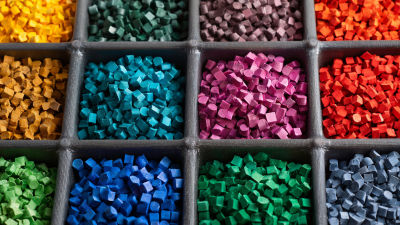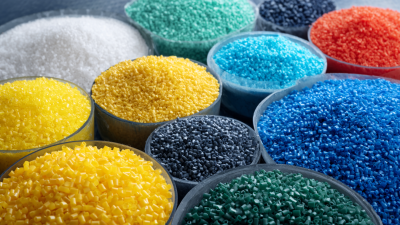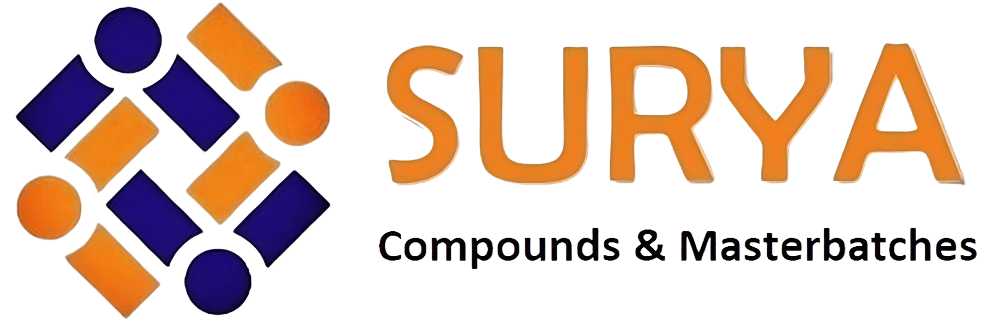- Home
- Masterbatch
- Additive Masterbatch
- Anti-Block Masterbatch
- Anti-Fog Masterbatch
- Anti-Microbial Masterbatch
- Anti-Oxidant Masterbatch
- Anti-Static Masterbatch
- Anti-Termite & Rodent Masterbatch
- Desiccant / Anti-Moisture Masterbatch
- Optical Brightener Masterbatch
- Flame Retardant Masterbatch
- Slip Masterbatch
- Polymer Processing Aid (PPA) Masterbatch
- UV Masterbatches
- VCI Additive Masterbatch
- Filler Masterbatch
- Black Masterbatch
- White Masterbatch
- Color Masterbatch
- Mono Masterbatches
- Special Effect Masterbatches
- EVA Masterbatch
- OXO Biodegradable Masterbatch
- XLPE Masterbatch
- Cable Masterbatch
- Nylon Masterbatch
- TPU Masterbatch
- Additive Masterbatch
- Compound
- Market
- Company
- Blog
- Contact Us
2025 Guide: How to Choose the Right Compound Filler for Your Projects
In the rapidly evolving construction and manufacturing industries, the selection of the right compound filler has become an essential factor in ensuring the durability and performance of projects. According to a recent report by Freedonia Group, the compound filler market is expected to reach $5.5 billion by 2025, driven by increased demand for high-quality materials in both residential and commercial applications. The versatility of compound fillers, from enhancing adhesive performances to providing superior moldability, underscores their significance across various projects.
Selecting a suitable compound filler involves understanding the specific requirements of the application, including factors such as compatibility with other materials, application methods, and environmental considerations. Industry experts emphasize that using the correct filler can significantly impact the longevity and aesthetic appeal of the finished product. As reported by MarketsandMarkets, the global market for polymer-based fillers alone is projected to grow at a compound annual growth rate (CAGR) of 5% through 2025, reflecting the rising adoption of compound fillers in innovative design and manufacturing processes. Thus, this guide serves as a comprehensive resource for projects undertaken in 2025 and beyond, empowering professionals to make informed choices about the compound fillers they utilize.

Understanding Different Types of Compound Fillers and Their Applications
When selecting the right compound filler for various projects, it’s essential to understand the different types available and their applications. In recent years, the adoption of synthetic bulk void fillers (BVFs), such as calcium sulfate and tricalcium phosphate, has seen significant growth, driven by their various advantages, including high sterility and compatibility with numerous applications. These fillers are increasingly favored in industries like biomedical and electronics due to their ability to enhance product performance and safety.
The electronic-grade silica filler market is also witnessing robust growth, with a projected CAGR of 5.8%. This filling material is categorized into crystalline silica powder, fused silica powder, and spherical silica powder, each tailored for specific applications such as electronic materials (EMC), copper-clad laminates (CCL), and multifunctional use (MUF). Furthermore, the anticipated expansion of the PTFE CCL market by 2034—affected by trends in communication, automotive, and defense sectors—highlights the evolving landscape of filler materials. Understanding the properties and applications of these fillers can lead to more informed decisions and drive innovation in their respective fields.
Key Factors to Consider When Selecting a Compound Filler for Your Project
When selecting a compound filler for your project, several key factors must be taken into account to ensure optimal results. First, consider the type of material you'll be working with. Different fillers are designed for various substrates, such as wood, drywall, or masonry. A compatible compound not only provides better adhesion but also improves the durability of the finished surface.
Another critical factor is the intended use of the filler. If you're working on a high-traffic area or an exterior project, you'll need a filler that is resistant to cracking and suitable for outdoor conditions. For fine finishes, opt for a smooth, easily sandable filler that can be painted over seamlessly.
**Tip:** Always check the manufacturer's recommendations to ensure you're choosing a product suited for your specific application. **Tip:** Test the filler on a small area before full application to see how it reacts with your materials. **Tip:** Lastly, consider the drying time; if you have a tight schedule, a quick-drying filler may be the best option for you.
2025 Guide: How to Choose the Right Compound Filler for Your Projects - Key Factors to Consider When Selecting a Compound Filler for Your Project
| Factor | Description | Examples |
|---|---|---|
| Material Type | Choose based on the substrate and the nature of the project. | Gypsum, Latex, Acrylic |
| Drying Time | Consider how quickly you need the filler to set. | Fast-drying, Standard |
| Application Method | How the filler is applied can affect choice; it could be manual or spray. | Trowel, Spray, Injection |
| Finish Quality | The final appearance and texture of the filler once dried. | Smooth, Textured |
| Environmental Impact | Consider sustainable options and VOC emissions. | Low VOC, Eco-friendly |
Comparative Analysis of the Top 10 Compound Fillers on the Market
When selecting a compound filler for your projects, understanding the nuances of the top products available on the market is crucial. A recent industry report by Freedonia Group highlights that the global demand for compound fillers is projected to reach $12 billion by 2025, driven by their essential role in construction, automotive, and DIY projects. Among the leading products, gypsum-based fillers are noted for their excellent workability, while polymer-based options often offer superior flexibility and durability, making them suitable for a variety of applications.

In a comparative analysis of the top 10 compound fillers, certain products stand out for their unique properties. For instance, 3M's Easy Sand Joint Compound is praised for its lightweight formulation and quick drying time, appealing to professionals seeking efficiency. Meanwhile, DAP’s Drydex® Rapid Paste presents an innovative color-changing feature that indicates when the filler is fully dry, thus minimizing the guesswork involved in project completion. Data from Market Research Future indicates that products featuring advanced formulations are gaining market share, reflecting a shift towards smarter, user-friendly solutions. This trend reveals a growing need for fillers that not only perform but also enhance user experience, ultimately shaping the future of compound filler choices.
Tips for Applying and Working with Various Compound Fillers Effectively
When working with various compound fillers, effective application techniques are key to achieving optimal results. Whether you’re using fillers for construction or crafting projects, preparation is crucial. Before applying, ensure surfaces are clean, dry, and free from contaminants. This sets the stage for strong adhesion and a smooth finish. Consider factors like temperature and moisture, as they can greatly influence drying times and application consistency.
Once you're ready to apply the filler, use the appropriate tools—such as putty knives, caulking guns, or specialized applicators—to achieve a uniform layer. For best results, work in manageable sections to allow for easier control and monitoring of the filler's curing process. After application, smoothing out the surface can prevent the need for excessive sanding later on. Additionally, always follow the manufacturer's guidelines for curing times and mixing ratios to ensure your projects look professional and stand the test of time.
Common Mistakes to Avoid When Choosing a Compound Filler for Your Needs
When selecting a compound filler for your projects, avoiding common mistakes is crucial to achieving optimal results. One common pitfall is failing to assess the specific requirements of the task at hand. Different types of fillers are designed for various applications, such as drywall, woodworking, or masonry. Using a filler that does not match the substrate can lead to poor adhesion, cracking, or premature failure. Always ensure that the filler you choose is compatible with the materials you are working with.

Another mistake is overlooking the importance of drying time and application method. Many projects require fillers to dry quickly, while others might benefit from longer working times. Selecting a product without considering these factors can result in rushed applications or disturbed finishes. Additionally, some fillers may require specific tools or techniques for optimal application.
Familiarizing yourself with these requirements beforehand can save time and enhance the quality of your work. Being aware of these common mistakes will empower you to make informed decisions, ultimately leading to successful project outcomes.
Related Posts
-

Discover How Slip Masterbatch Revolutionizes Plastic Processing Efficiency
-

What is Color Masterbatch and How It Transforms Plastic Manufacturing
-

10 Essential Tips for Choosing the Right Polyethylene Masterbatch for Your Projects
-

Exploring the Fascinating World of Plastic Effects: How They Transform Our Everyday Materials
-

Understanding the Benefits of Anti Static Plastic in Electronics Packaging
-

The Role of White Masterbatch in Enhancing Sustainable Plastic Solutions
